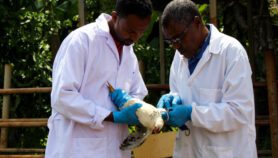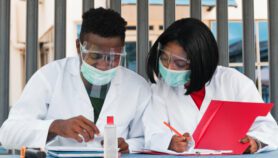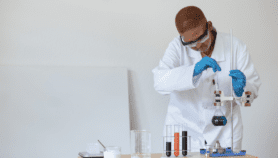By: Yojana Sharma
Send to a friend
The details you provide on this page will not be used to send unsolicited email, and will not be sold to a 3rd party. See privacy policy.
[LONDON] Researchers are aiming to bridge the gap between Chinese and Western systems of medicine with what they say is the first database of chemical compounds found in herbs used in traditional Chinese medicine.
The database, known as Chem-TCM, will be used to help with drug development, according to researchers from the Institute of Pharmaceutical Science at King’s College London, United Kingdom, and partners at the Shanghai Institute of Materia Medica, China, who launched it this month (18 October).
The database features more than 12,000 chemical compounds identified in more than 300 Chinese herbs, and can be searched using text searches, but also using chemical terms.
"You can even draw a picture of a chemical structure on a computer screen and the database will search for matching molecular structures and activities," said David Barlow, an expert in computer-aided drug design and delivery systems at King’s College London.
Although botanical databases on traditional medicine already exist, Barlow said this database is geared "towards identifying known activities of the chemicals in Chinese medicines" and predicting activities of similar compounds.
It includes botanical and chemical information, predicted activity of the chemicals against known Western therapeutic targets and available data on toxicology of those compounds.
The active chemicals in many herbs have not yet been identified, Barlow said, so some of the compounds in the database are "scientific predictions based on chemical footprints of compounds".
The database aims to "provide a link between Chinese and Western medicine on a molecular level," said Barlow.
"The Chinese are interested in marrying up Chinese practices and getting them accepted in the West. It also helps them defend their own medical practices and show that their remedies can be backed up by scientific investigation," Barlow said.
Molly Meri Robinson Nicol, a technical officer at the WHO, said: "If someone is creating a database that is largely informative, then [collecting] information in one place is a major step forward". The WHO is working on launching a global database of traditional medicines.
But she said that establishing which chemical compound is active in a traditional medicine is not the same as knowing that the medicine is effective.
"With commercially produced pharmaceutical products you know exactly what goes into a drug but in traditional medicine there are variations in chemicals within each plant or even within each leaf. Testing each compound would be a huge and very expensive undertaking — a drop in the bucket considering how many traditional medicines there are."
Barlow said the database was developed using publicly available information on Chinese medicines, with funding from the Global Partnership fund at the UK Department for Business, Innovations and Skills as well as Innovation China-UK — a subsidiary of Queen Mary University of London. But the database will not be freely available — it will instead be commercially marketed to major pharmaceutical, biotech, agricultural and educational organisations.













